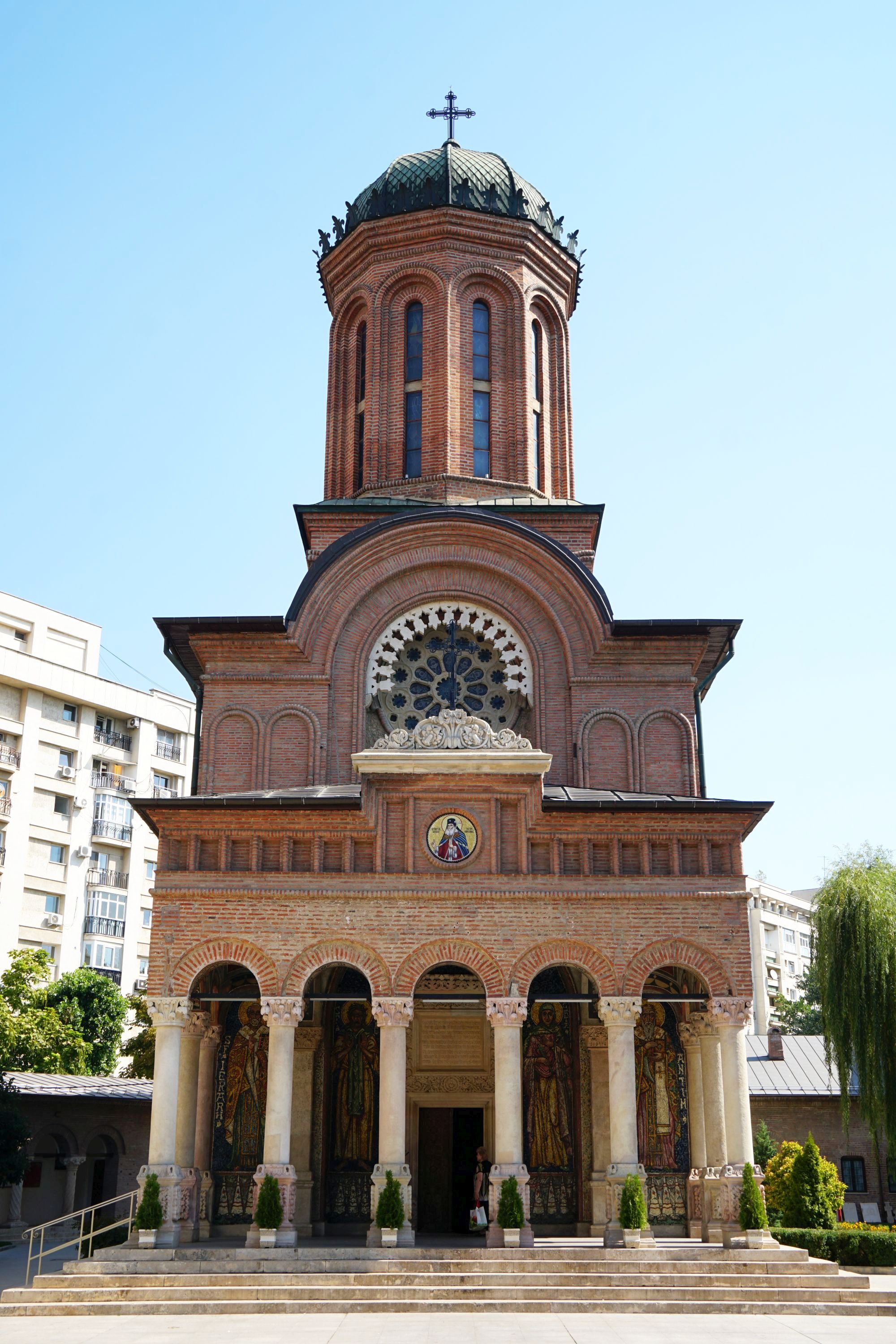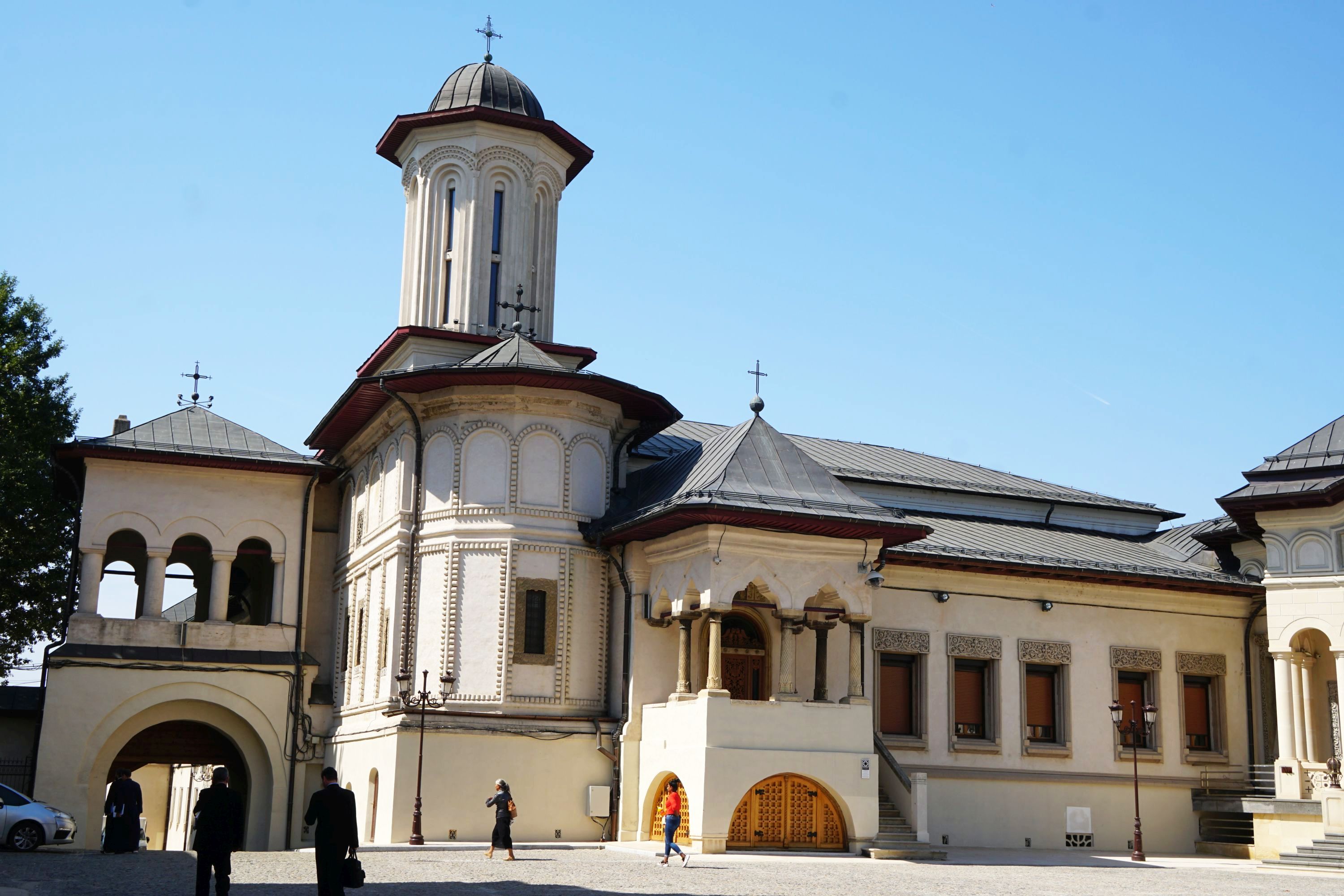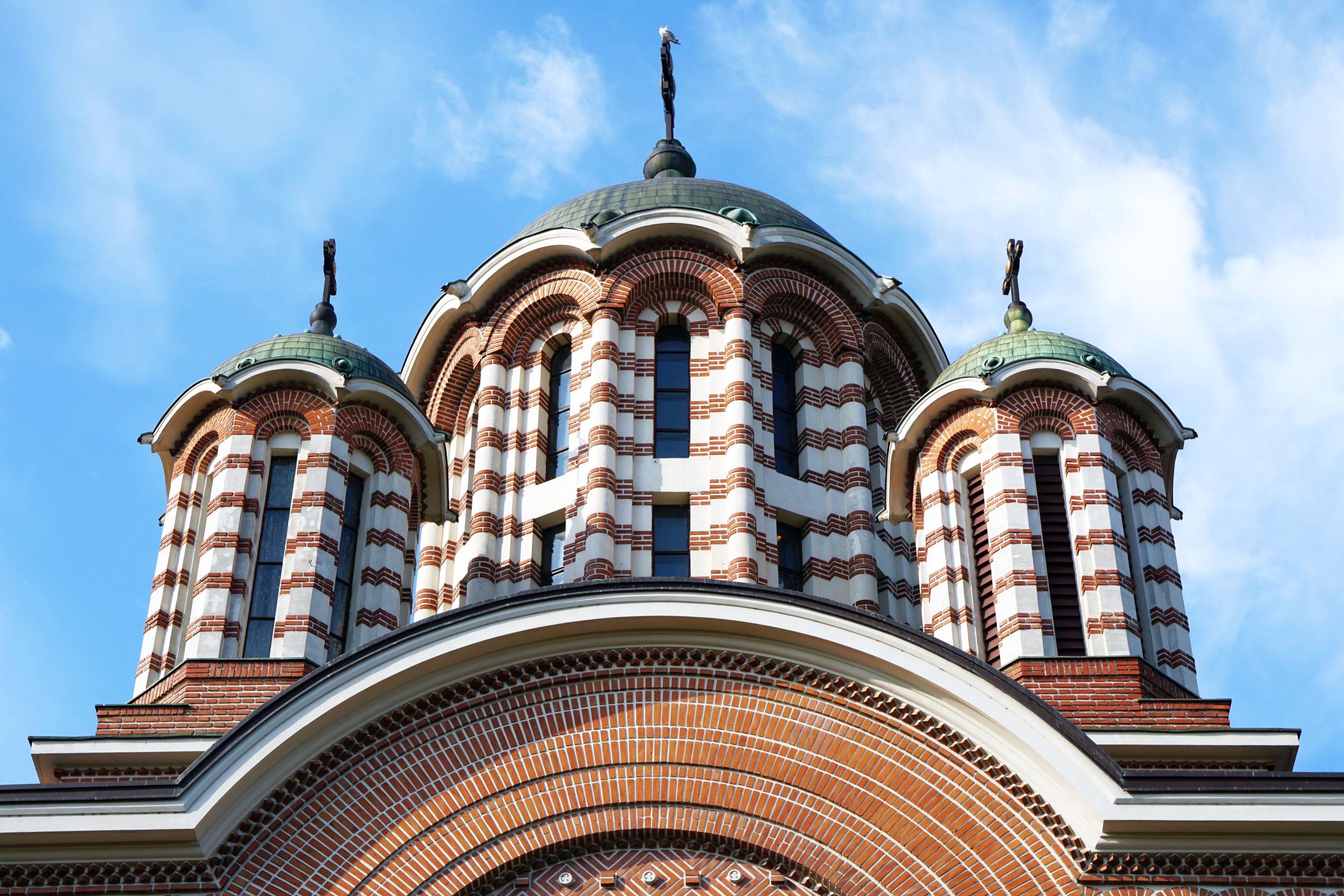A reasonably comprehensive post on Romanian Orthodox churches and monasteries in Bucharest, featuring 25 of them, plus three wonderful synagogues. Orthodox churches are relatively narrow and tall, often with between one and three domes, and are filled with images of Christ and other holy figures, that many worshippers touch or kiss. Within a fairly standard design there is some variation as this post will hopefully demonstrate.
To start with the most controversial, the €110m Romanian People’s Salvation Cathedral currently under construction. Once complete it will be the largest Orthodox Church in the world by volume and third largest by area. It is being built behind the Palace of Parliament, Ceausescu‘s monumental folly, an interesting location given the Communists dislike of religion.

Saint John Chrysostom Church is a small wooden church on the corner of the site. It was uncharacteristically light and bright inside.


The church in All Saints’ Antim Monastery, built in early 18th century, was fairly more representative of an atmospheric Orthodox Church, a wonderfully quiet and calm place of reflection.



There were colourful and intricate paintings and mosaics outside the church.



The Patriarchal Cathedral, built in the late 17th century on a rare hill in Bucharest, is the seat of the Romanian Orthodox Church. No photos are allowed inside but the interior is consistent, if perhaps more golden, with the other churches pictured here.




Saint Spyridon the New Church was an absolute gem I just happened to walk past. It is clearly newer than most of the churches here, and larger, with a crisp white and gold exterior, and an unusual interior filled by a huge painting filled dome.


Radu Voda Monastery was renovated in the mid 19th century and was another favourite of mine, with a very colourful and well lit interior that was quite transfixing.


This neighbouring gate house had wonderful paintings on the walls and ceilings.


The tiny Church of Bucur the Shepherd is possibly one of the oldest churches in the city, but is now sandwiched between apartment blocks.



I caught St. Nicholas Church as it was flooded by sunlight from the tower windows above.


The crisp white Biserica Sfântul Mina Vergu had some wonderful ornate features inside.



Though restored in 1970 the interior of Biserica Răzvan was in the worst condition of any I saw, though it gave it a certain atmosphere.


These three synagogues provided a fascinating contrast to all the churches. The Sinagoga Mare Holocaust Museum is housed in the former Grand Synagogue or Polish Synagogue, a nondescript building from the outside, now surrounded by other buildings, but inside the yellow patterned ceiling is quite vivid.



The nearby Jewish Museum Bucharest, housed in the 1836 Templul Unirea Sfântă museum, tells the broader story of Jewish life in Romania. This former synagogue is even more spectacular inside, and the recently reopened museum is well presented and informative.



The main working synagogue remaining is the beautiful Templul Coral, built in 1857. Note that there is security at all three buildings and your passport is required to enter. The first two are by donation, the Templul Coral is 10 lei to enter.




New Saint George’s Church, built in the late 16th century but clearly more recently restored, was another highlight for the rich use of colour inside.


Biserica Sfantul Anton had a Byzantine inspired exterior with red bricks and a well located sea of red flowers outside.


Stavropoleos Monastery was one of the few churches I visited where there were other tourists, thanks to it’s central location and delicate interior.



Biserica Zlătari was a pretty standard church, worth a quick visit.


Biserica Studentilor was a wonderful find, with rare gold domes on top, and an unusual interior, with the entrance at angle to the main part of the church and plenty more gold decoration inside.



Three Hierarchs Church – Coltea was another typical church.


As was Biserica Domanei.

I got to Cuibul cu barză Church before it opened but it was a good example of how so many of the churches are surrounded by newer developments. The Communists weren’t fans of religion but kept the church to help placate the masses during their rule.

Saint George Plevna Church had one of the most beautiful exteriors, colourful red and white brickwork.



Old Church of St. Eleutherius wasn’t open and looked a bit stranded between roads.

Just up the road from it the Church of St. Eleutherius was another highlight, for it’s expansive interior and intricate exterior. Having a place like this to myself was a real treat, and a benefit of visiting Bucharest, even in summer it is relatively quiet compared with so many other European cities.




The Mihai Vodă Monastery was moved 280m on rails in 1985, to avoid being demolished as part of the development of Civic Centre around the Palace of Parliament. It originally dates from the mid 19th century and was another beautiful building.


Biserica Sfinții Apostoli dates from the mid 17th century but was renovated in the early 18th century.



The last church I visited in Bucharest, Biserica Sfinții Împărați Constantin și Elena had a stunning centre piece, and some nice mosaics outside.



To finish with one of best known, Kretzulescu Church built in 1722, another fine example of Orthodox Church design.







Leave a Reply